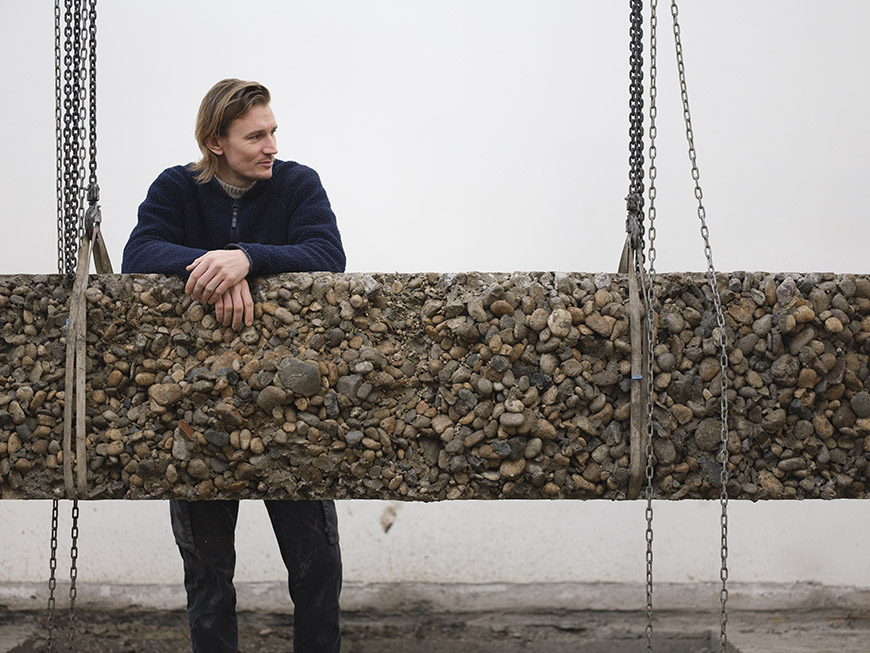Venice Architecture Biennale 2025 – The Danish Pavilion is a Construction Site
We don’t know if helmets and safety shoes will be distributed, what we do know is that “Build of Site”- the Danish Pavilion at the 19th Venice Architecture Biennale– will be a hybrid space, in which Architect Søren Pihlmann (Pihlmann Architects Studio), who is in charge of the project, proposes a format in which the pavilion’s renovation works – which will be completed after the Biennale’s closure- is an integral part of the exhibition. During the exhibition period, the pavilion will be accessible as a construction site where work is temporarily suspended.
In 2016, an in-depth analysis was conducted on the state of the building, which revealed several critical aspects, and consequently, the urgency to intervene also to mitigate the effects of climate change that made it more vulnerable. Therefore, it became necessary to renovate floors and windows, as well as create a new entrance on the northeastern facade.
Begun in October 2024, the works include new strategies to reuse waste materials from construction and demolition processes. “It should be clear to most people by now that, going forward, we’ll have to think constructively with regard to what we’ve already put into the world. This has been perceived as a limitation. But now should be the time to discuss all the architectural possibilities provided by the ground, the stones, the concrete, or by whatever you find in the place where you’ve been granted the privilege to build upon the world,” explains Søren Pihlmann.
Cover: “Build of site”, the Danish Pavilion at the 19th Venice Architecture Biennale, portrait of Søren Pihlmann, photo Pihlmann Architects.
“Build of site”, the Danish Pavilion at the 19th Venice Architecture Biennale.
Carl Brummer (1864-1953), architect, The Royal Library – The Art Library
Materials
From May to November 2025, the pavilion will be accessible to the public, who will find archetypal elements such as podiums, ramps, benches, and tables made from waste materials from the renovation. The materials used in the pavilion -wood, limestone, sand, silt, and clay- have been analyzed in collaboration with researchers and students from the Royal Academy, the Technical University of Denmark, the University of Copenhagen, and the ETH Zurich since fall 2023. Gelatin, a byproduct of the Adriatic fish industry, was used as a binder, mixed with sand excavated from the subsoil of the pavilion to create countertops. The limestone tile has been studied to understand how they were cut in Istrian quarries to determine the risk of the tile breaking while removing it, and whether it could be reused for the floor renovation.
Non-destructive Ultrasonic Pulse Velocity (UPV) tests were also carried out on the extrados of the existing slabs to determine the best way to cut the elements and achieve maximum structural strength for their reuse as beams.
“Build of site”, the Danish Pavilion at the 19th Venice Architecture Biennale, photo Hampus Berndtson.
“Build of site”, the Danish Pavilion at the 19th Venice Architecture Biennale, photo Hampus Berndtson.
New Alliances, New Awareness
Close collaboration with experts from various fields, who have contributed to the development of the project from the early stages, demonstrates how architectural practice should evolve in the future: the focus is not on the original function and value of materials, but on how they can be enhanced to enrich the built environment.
Visitors will be able to walk on rammed earth patches, rough concrete surfaces, and surviving floor tiles. The exhibition will also feature a film, made in collaboration with Louisiana Channel, which documents the project from conception to the present. Finally, a section will present prototypes, studies, and other material documenting the work already done and the future stages of the pavilion’s renovation.
“Build of site”, the Danish Pavilion at the 19th Venice Architecture Biennale, photo Hampus Berndtson.
